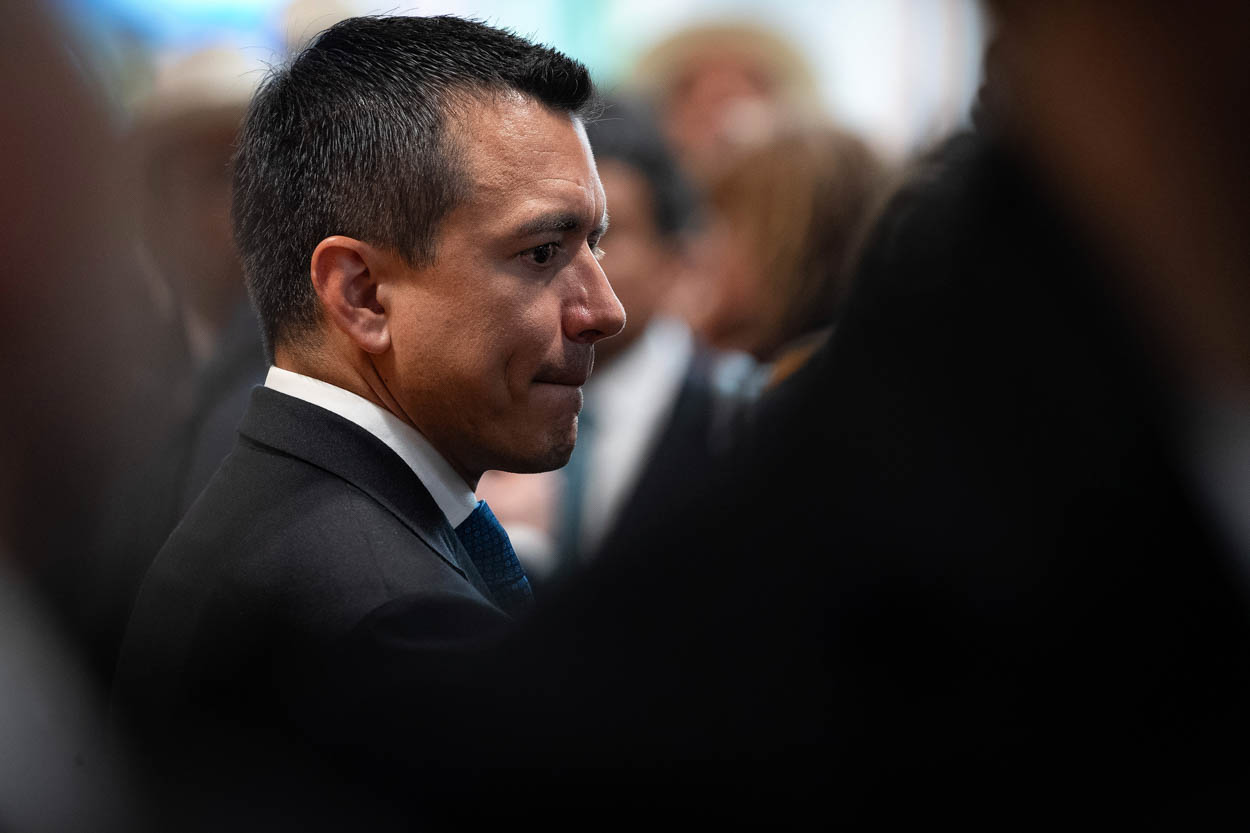Peru's Ambassador to U.S. Luis Valdivieso on Amazon Clashes
Peru's Ambassador to U.S. Luis Valdivieso on Amazon Clashes
With an eye to the recent conflict in Peru's Amazon region, the Council of the Americas hosted a June 18 briefing in Washington by Peru’s Ambassador to the U.S. Luis Valdivieso.
Summary
With an eye to the recent conflict in Peru's Amazonas region, the Council of the Americas hosted a June 18 briefing in Washington by Peru’s Ambassador to the U.S. Luis Valdivieso. In early June, Security forces clashed with indigenous groups protesting the development of ancestral lands for oil and natural gas extraction. The ambassador provided an overview of the current situation, discussed Peru’s legal framework for sustainable development, and highlighted actions taken by the government toward a long-term solution, including the decision to postpone the implementation of land-use laws. He noted that a permanent solution must include dialogue with indigenous groups, the participation of civil society, and respect for democratic principles.
Economic Growth
Peru has made substantial progress toward meeting its economic development objectives in recent years. Between 2006 and 2008, rural and urban poverty dropped, external debt was halved, and public and private investment combined soared from $14 billion to over $64 billion. Much of this investment has gone to the oil sector. The government estimates that between 2005 and 2008, 72 new oil exploration and production contracts were signed, in addition to the 103 existing concessions.
According to Valdivieso, for many years Peru sought to develop the Amazonas region in a sustainable way, beginning with legislation in 1995 that allowed for private investment in native land. With the forestry and wildlife decree and corresponding presidential decrees in 2008, the government attempted to simultaneously modernize development laws and increase Peru’s competitiveness. While some have blamed the Peru-U.S. free trade agreement for these laws, the ambassador noted that the 2008 decrees went beyond a single trade deal and were instead aimed at facilitating current and future trade agreements while protecting the Amazonas region. Illegal logging and mining—as well as pollution from legal activities—have presented ongoing challenges to rainforest preservation. But the “main culprit” of deforestation, Valdivieso said, has been agriculture.
Two of the 2008 presidential decrees opened native lands to private development, allowing companies to bypass indigenous communities to obtain permits. This sparked protests by native groups in which 24 police and at least 10 civilians were killed—the worst violence Peru has seen in two decades. Both decrees were overturned by Congress on June 18. For a more detailed look at the presidential decrees and indigenous community protests, read an AQ Web Exclusive.
Acknowledging Mistakes
Valdivieso acknowledged the Peruvian government made a grave mistake in failing to include native communities in early development dialogues. But he also indicated that foreign influences, most notably Bolivian President Evo Morales and ministers from Bolivia and Venezuela, had a hand in inciting violence and radicalizing the native communities.
The ambassador added that when native groups were included in dialogues, some of their interlocutors had agendas that were not representative of the wider communities. Furthermore, the government underestimated the involvement in the protests of criminals, who served to escalate the conflict and ignite armed confrontation.
Evaluation and Collaboration
The Peruvian government responded to the recent crisis by inviting the UN Special Rapporteur on human rights and fundamental rights of indigenous people to evaluate the situation. A working group was set up to facilitate dialogue between members of the government and traditional leaders from over 390 indigenous communities. The group will develop a joint agenda to prevent rainforest destruction. Its members agreed to recognize that the police had acted in a responsible way in attempting to restore public order during the recent protests.
Valdivieso said that the Peruvian government stands ready to put in place new laws that protect and promote sustainable development of the Amazonas region. “The strategy of Peru is transparency, clear objectives, honesty, and addressing issues of corruption,” said the ambassador. “What [we] cannot accept is violence as a vehicle for conveying concerns.”







